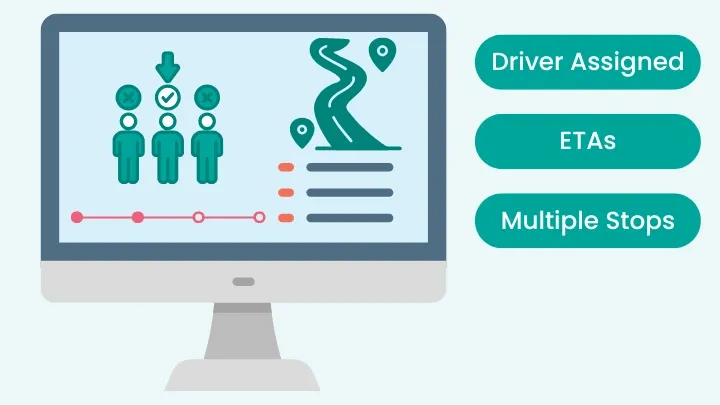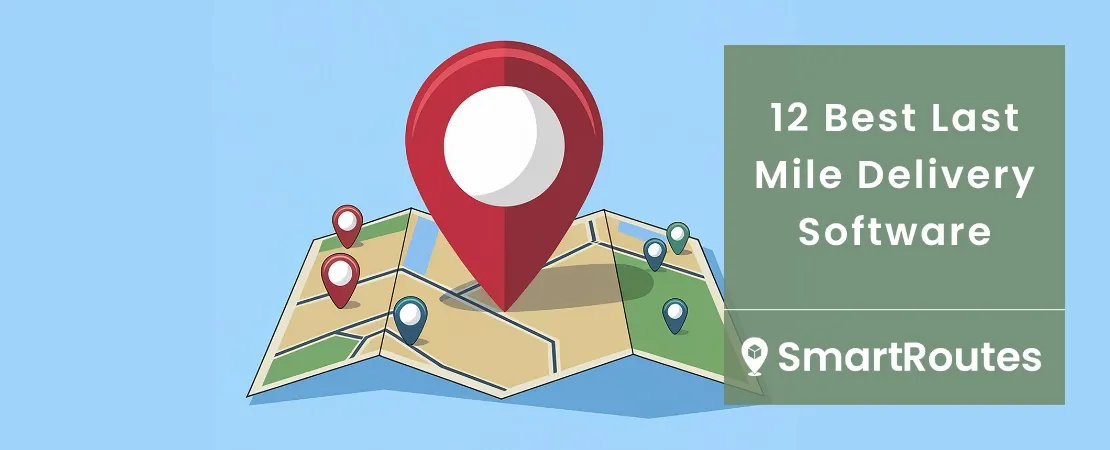Quick Summary
- Automated delivery allocation uses routing algorithms to assign orders to drivers & vehicles based on delivery time, vehicle capacity, delivery windows, and customer preferences.
- It shortens delivery time and improves order accuracy, which helps to improve customer satisfaction.
- Ties together warehouse management, inventory management and fleet management so last-mile delivery works with supply chain management.
- Real-time tracking, live tracking links and proof of delivery increase visibility and reduce failed deliveries.
- Automation software lets teams scale delivery schedules and balance fleet utilization without adding headcount.
Customers expect timely, accurate deliveries and clear communication about when their order will arrive.
At the same time, companies face tighter margins, more complex delivery options AND higher peaks in customer demand.
Manual order assignments struggle to keep up, causing missed delivery windows, inefficient delivery routes and frustrated customers.
Automated delivery allocation fixes this by using route optimization software to assign orders efficiently. It connects orders with available drivers & vehicles, combining live tracking and performance analytics so every stage of the supply chain contributes to a better delivery experience.
What is automated delivery allocation?
Automated delivery allocation is a system-driven way to match orders with the best available resource driver, vehicle and time slot. Rather than relying on spreadsheets or phone calls, the software automatically evaluates factors like:
- delivery time and delivery windows
- delivery routes and proximity to drivers
- driver schedules (including breaks and start + end times)
- vehicle capacity and fleet utilization
- customer preferences and priority stops
- stop types ie. drops offs vs collections
By combining these data points with delivery management software, automated allocation ensures orders are assigned to the right vehicle at the right time.
The result is fewer late or failed deliveries, improved order accuracy and a clearer proof of delivery process.
SmartRoutes Route Planning Software
Streamline your entire delivery process, all from one platform

Benefits of automated order allocation
Faster and More Reliable Deliveries
Automated delivery allocation reduces idle time between stops and eliminates manual scheduling delays.
By using real-time data and rules-based assignments, it ensures that every order is matched to the most appropriate driver or vehicle, improving overall delivery time and adherence to promised delivery windows.
Higher Customer Satisfaction and Stronger Engagement Through Accurate ETAs and Live Tracking
Customers receive precise delivery windows and live tracking links for every order.
Automated notifications and proof of delivery updates help manage expectations, increase transparency, and reduce support inquiries.
Lower Operational Costs and Optimized Fleet Utilization Through Smarter Planning
By taking vehicle capacity, route optimization, and delivery schedules into account automatically, automated allocation maximizes fleet utilization.
This reduces empty miles, lowers fuel costs, and ensures drivers operate efficiently, translating into significant savings and more productive delivery operations.
Scalable Delivery Operations Without Increasing Manual Workload
Automation software can handle high volumes of orders, fluctuating customer demand, and on-demand delivery requests without requiring proportional increases in staff.
This allows businesses to scale delivery operations quickly and efficiently while maintaining quality service.
Actionable Insights Through Data-Driven Analytics for Continuous Improvement
Performance analytics and reporting provide insights into delivery patterns, fleet utilization, and customer demand trends.
These data-driven insights allow logistics teams to proactively adjust delivery schedules, improve route planning, and continuously enhance supply chain performance.
How automated allocation works
1. Order intake: Orders flow in from eCommerce platforms or point-of-sale systems.
2. Rule-based assignment: The system applies business rules: required delivery windows, customer preferences, vehicle capacity and any other priority flags.
3. Route planning and optimization: Allocated orders are grouped into routes using route optimization so drivers follow efficient delivery routes and meet delivery time commitments.
4. Real-time tracking and communication: Drivers share live tracking links so customers can view ETAs. Dispatchers monitor progress and can reroute if needed.
5. Proof of delivery and feedback: Once the delivery is complete the system captures proof of delivery, such as a signature, photo or timestamp, and feeds performance data back into the system.

Impact across the delivery lifecycle
Automated allocation shifts operations from reactive to proactive.
Instead of facing missed slots and reassigning orders manually, logistics teams manage delivery schedules with transparency.
Warehouse operations and inventory management feed accurate supply data into the allocation engine so orders are only assigned when stock is available. That single source of truth reduces order errors and supports a seamless delivery experience.
On the fleet side, automation improves fleet utilization. Routes are planned to maximize vehicle capacity while respecting delivery windows and customer expectations.
For customer-facing functions, automated allocation improves the delivery experience through accurate ETAs, live tracking links and reliable proof of delivery.
Make Every Delivery Count, Starting with Smarter Allocation
Automated delivery allocation is no longer a nice-to-have — it’s the foundation of a modern delivery operation. When order assignments, route planning and fleet management work together automatically, delivery time improves, fleet utilization increases and customers receive a far better delivery experience.
Whether you're scaling last-mile logistics or simply looking to eliminate manual dispatch work, automation software lets you do more with fewer resources. It reduces planning time, removes guesswork and ensures every delivery leaves the warehouse on time and arrives with proof of delivery.
Ready to replace manual dispatching with automated order allocation?
Start your free trial of SmartRoutes today and see how easy it is to assign smarter, optimize routes and deliver with confidence — every time.
FAQ
1. What is the difference between route planning and automated delivery allocation?
Route planning focuses on sequencing and optimizing stops once orders are assigned. Automated delivery allocation decides which orders go to which vehicle or driver in the first place, using rules like vehicle capacity, delivery windows and customer preferences. Both work together to improve delivery time and order accuracy.
2. Can automated delivery allocation handle on-demand delivery?
Yes. The system can prioritize on-demand requests, re-balance routes in real time and update delivery schedules to accommodate urgent customer demand without disrupting service for scheduled deliveries.
3. Does this require replacing existing fleet management systems?
Not necessarily. Most delivery management software integrates with existing fleet management and warehouse systems. Integration ensures inventory management and vehicle capacity feed into allocation decisions.
4. How does automated allocation improve customer satisfaction?
By assigning orders based on delivery windows, sending live tracking links and providing timely proof of delivery, customers receive clearer communication and more accurate ETAs, which improves their overall delivery experience.
5. What role does predictive analytics play?
Predictive analytics forecasts demand, identifies recurring patterns and helps teams plan delivery schedules and fleet utilization proactively. That leads to fewer surprises during peak periods and better supply chain management.
If you enjoyed this blog, you might also be interested in:





